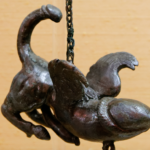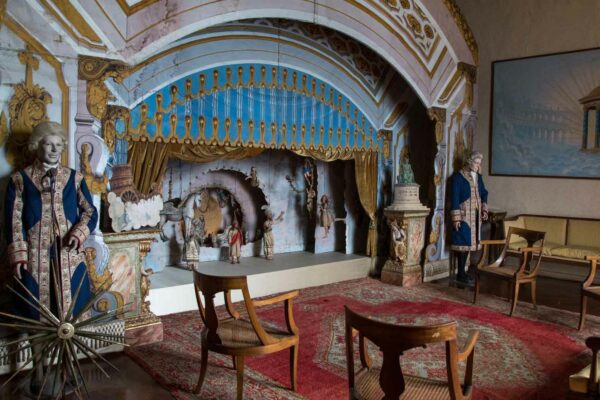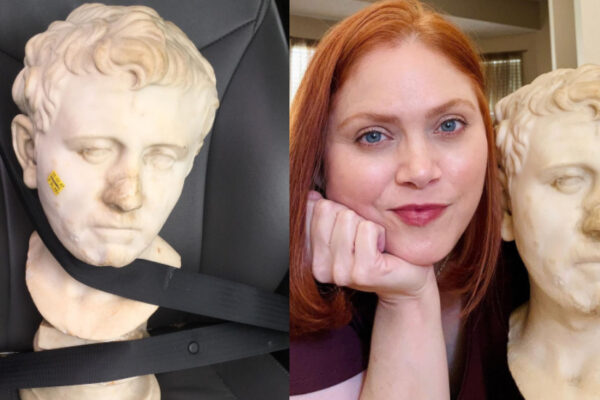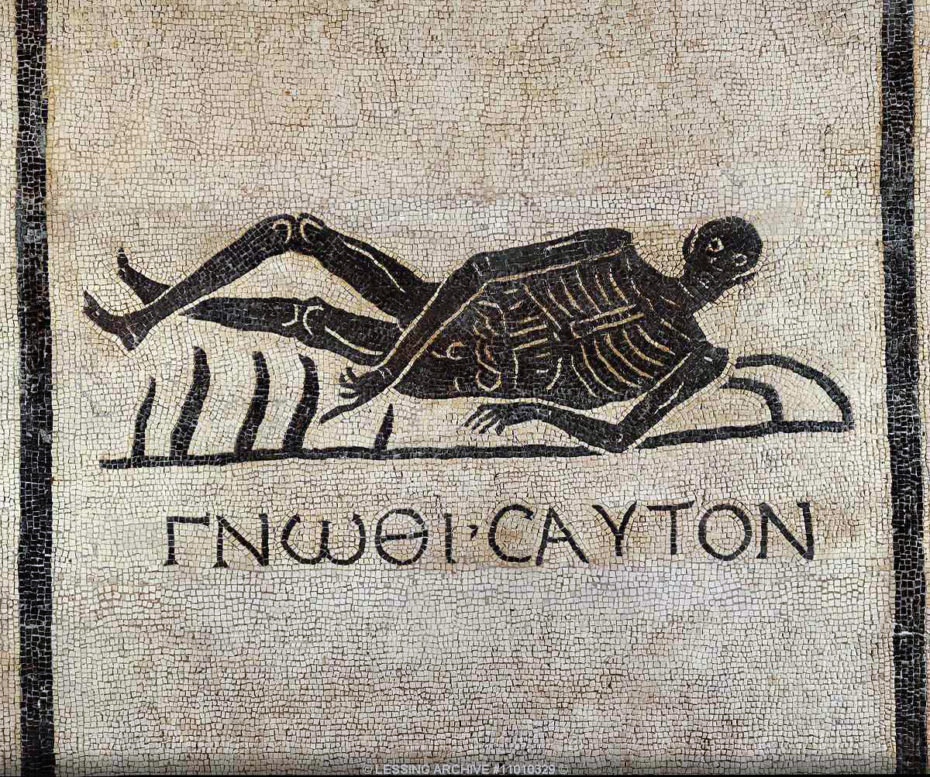
The good people of the Roman Empire tend to be remembered as gladiators and prodigious builders of roads, temples and aqueducts who loved to drink lots of wine and end up in bed with their siblings. It’s far less common that we think of Romans as a morbid civilisation, obsessed with their own death culture. As it turns out, they were as macabre as the Victorians, inviting death into their everyday lives as casual entertainment. In fact, we’d go as far as to argue they were the original goths…
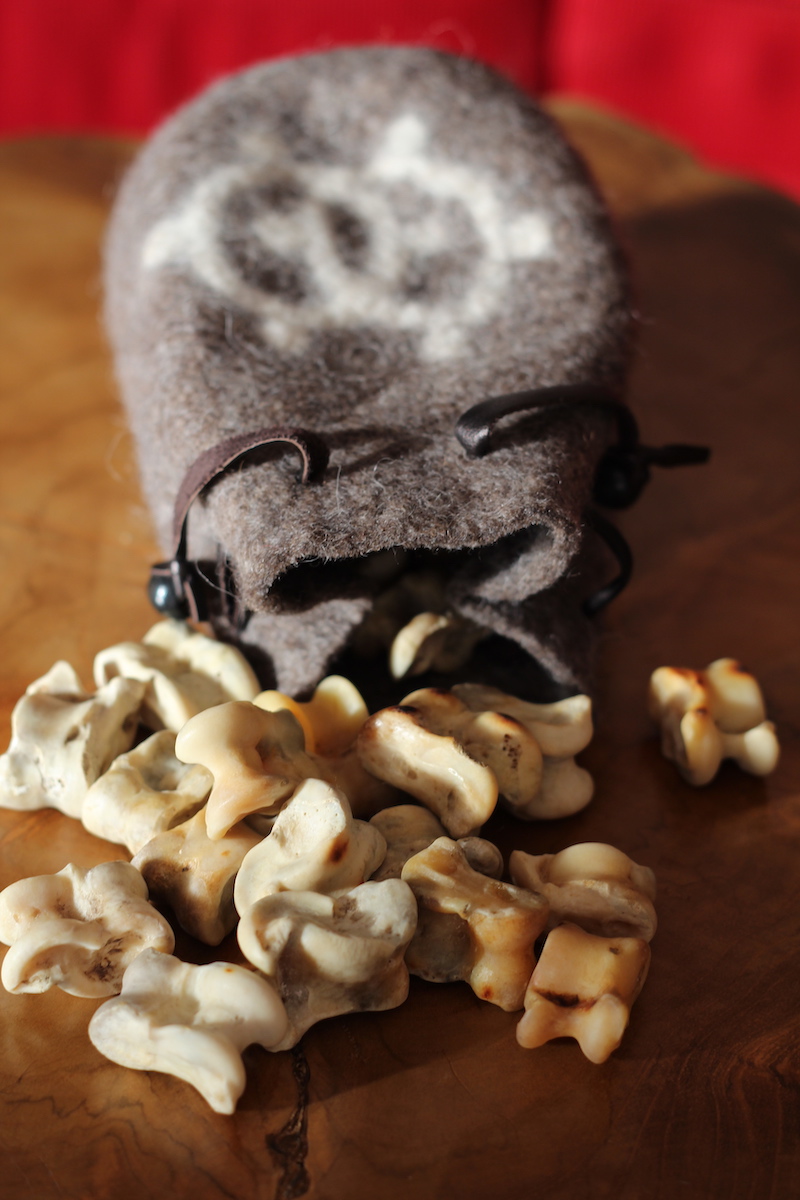
What makes Romans such a top-notch, albeit inadvertent symbol of #GothLife, is just how pervasive death was in their culture. Out of sight, out of mind is pretty much the Western philosophy when it comes to death and dying today, and rather a privileged one at that; the Romans had no choice but to stare straight down the nose at death on the regular.
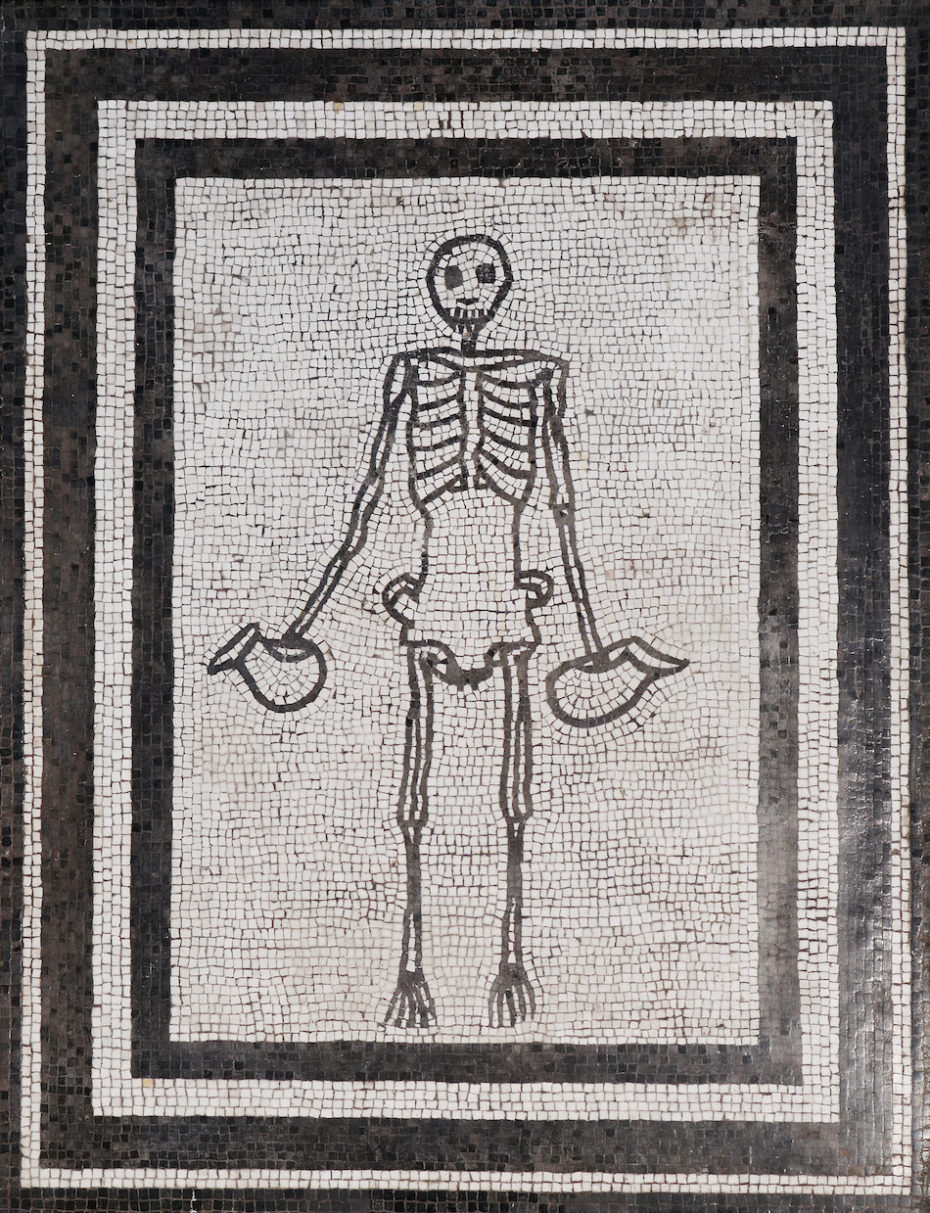
Survival rates were very low in children, with the mortality rate for infants and children at almost 50%. Even upon a grand military victory, it was customary for a general’s aide to whisper “memento mori” – aka, “remember, you’re gunna die” – in his ears. A sarcophagus, which actually translates to “flesh eater” was carved with portraits of the dead and elaborate battle scenes. What’s more, a sarcophagus was also a canvas for a final call to action for the deceased: rather than wishing their loved ones to “Rest In Peace”, engravings usually said something in praise of the spirit world, or of living in the moment. In a culture where the journey to the afterlife could be a bumpy road, accolades for dead ancestors were everything. No phrase, or physical space, was left untouched as an opportunity to exercise that belief – you could even hire a “funerary mime” to imitate and celebrate the deceased at their funeral.
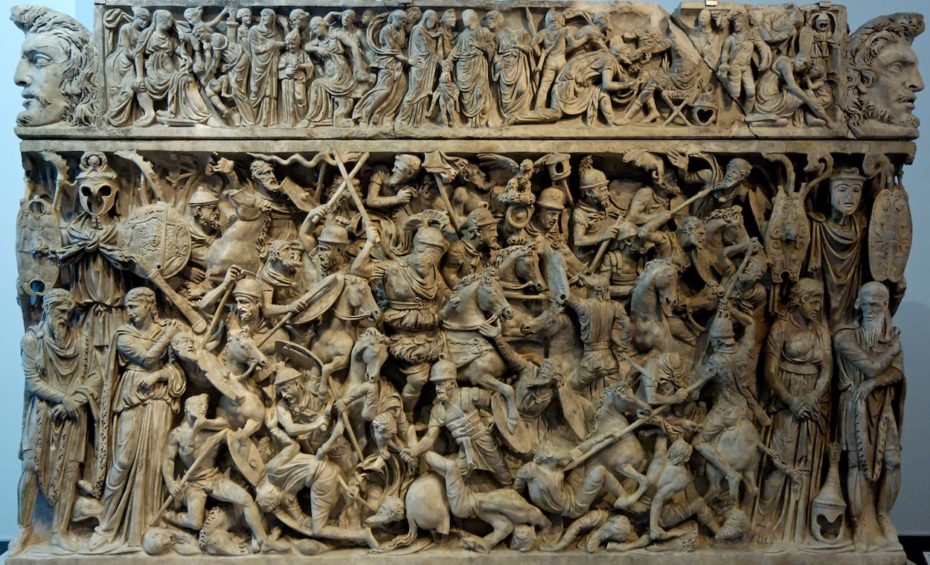
It all sounds a bit dreary until you shake off your 21st century perspective, and realise that such a proximity to death somewhat destigmatised it; which isn’t to say that Roman women didn’t ceremoniously rip out their hair in grief at funerals – but there was an equal amount of normalcy, dare we say joy, associated with the death of a loved one. There was even a February festival, Parentalia, that celebrated the dearly departed for nine days on end…
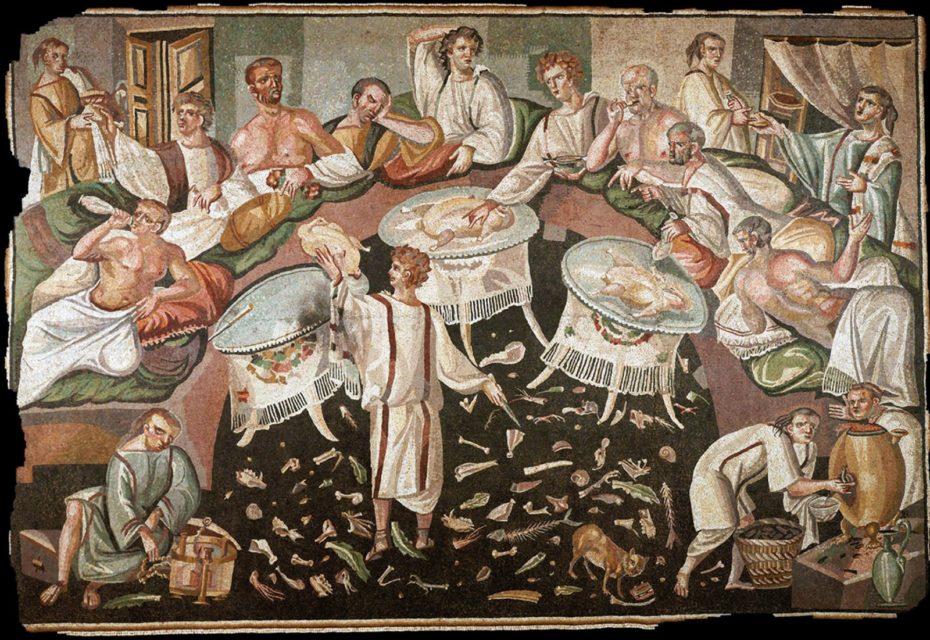
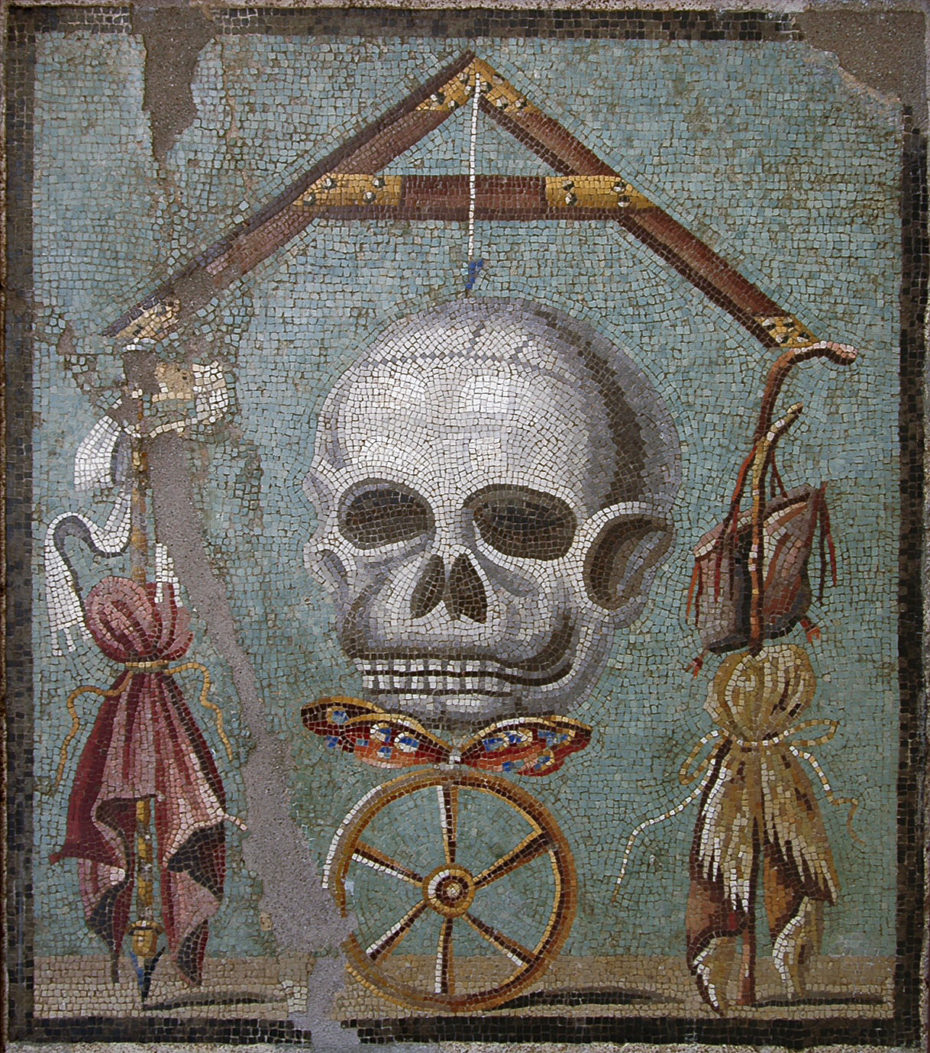
Hence, the reason for such elaborate tombs, which doubled as a cooking and dining spaces for surviving family and friends to break bread, and indulge in another Roman pastime: day drinking! (The graveyard banquets got so rowdy, it’s said that even St. Augustine filed a complaint.)
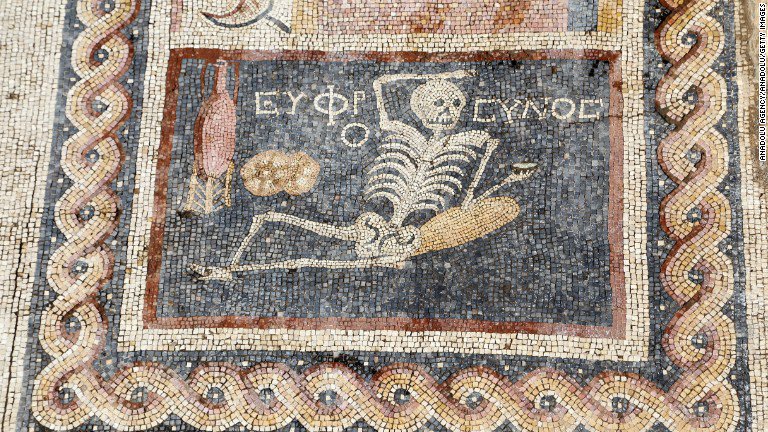
Hence, our 3rd Century BC mosaic skeleton with its wine at the ready, and the ancient equivalent of “Be cheerful, enjoy life” floating proudly above its skull – which has been touted as history’s original #YOLO (You Only Live Once) moment, and a reminder that the Romans’ reputation for indulgence wasn’t just pure gluttony. It was a way to reconcile the crippling fear of death with a better way of living, of preferring to dance, rather than wallow their way into the grave.
We’ll just leave you with the recipe for Ossa dei morti, AKA skeleton fingers, that can be traced back to the Romans, courtesy of Abruzzo Nibbles:
INGREDIENTS
- 3 eggs
- 300 gr of almonds
- 300 grams of sugar
- 300 grams of flour
- 1 teaspoon of baking powder

INSTRUCTIONS
- Beat the whole eggs in a bowl, add the sugar and mix.
- Add the ground almonds to the mixture.
- Add the sifted flour with the baking powder a little at a time and knead coarsely.
- Transfer the mixture to a floured work surface and continue to knead until a smooth dough is obtained.
- Roll out the dough with a rolling pin to obtain a sheet of about 3 cm thick.
- Cut strips a couple of centimeters wide from these rectangles of dough.
- Shape the rectangles of dough into small rolls and crush the rolls at both ends: in this way each roll should resemble a bone.
- Bake at 160 degrees in a preheated oven for 30 minutes.




